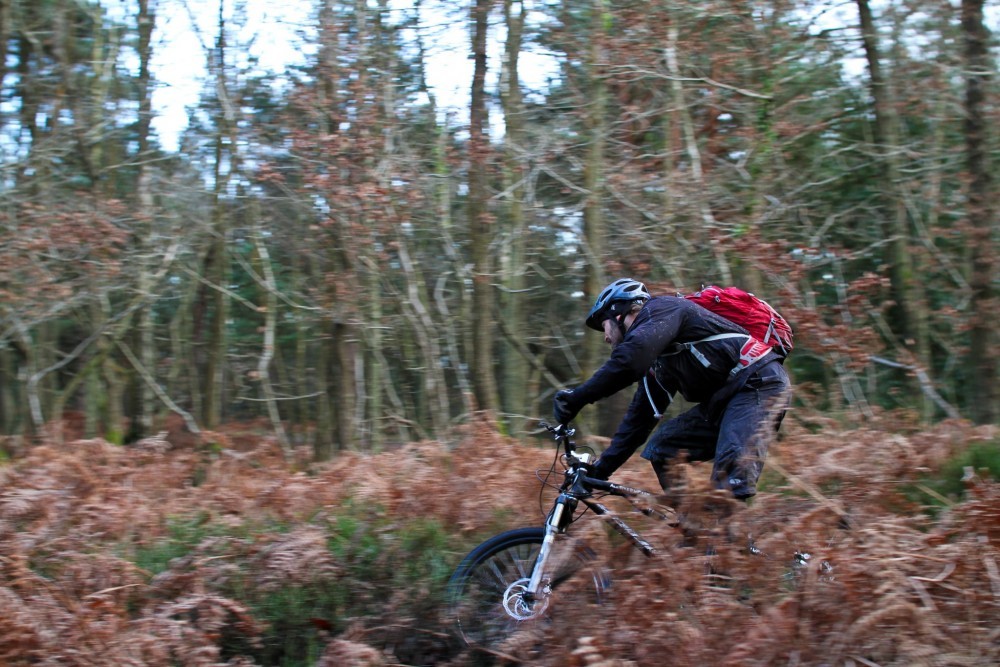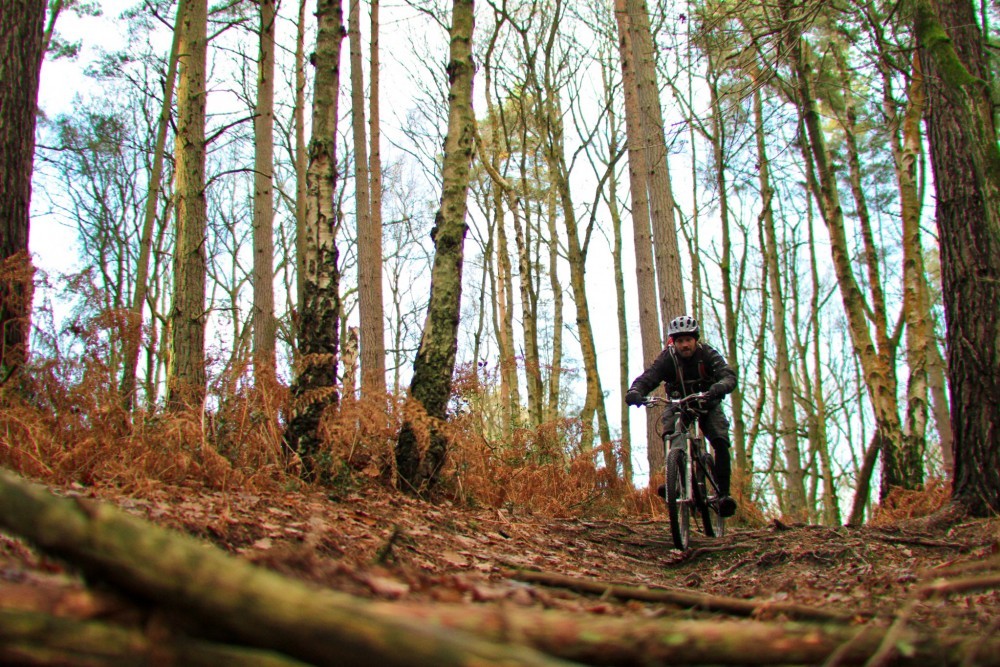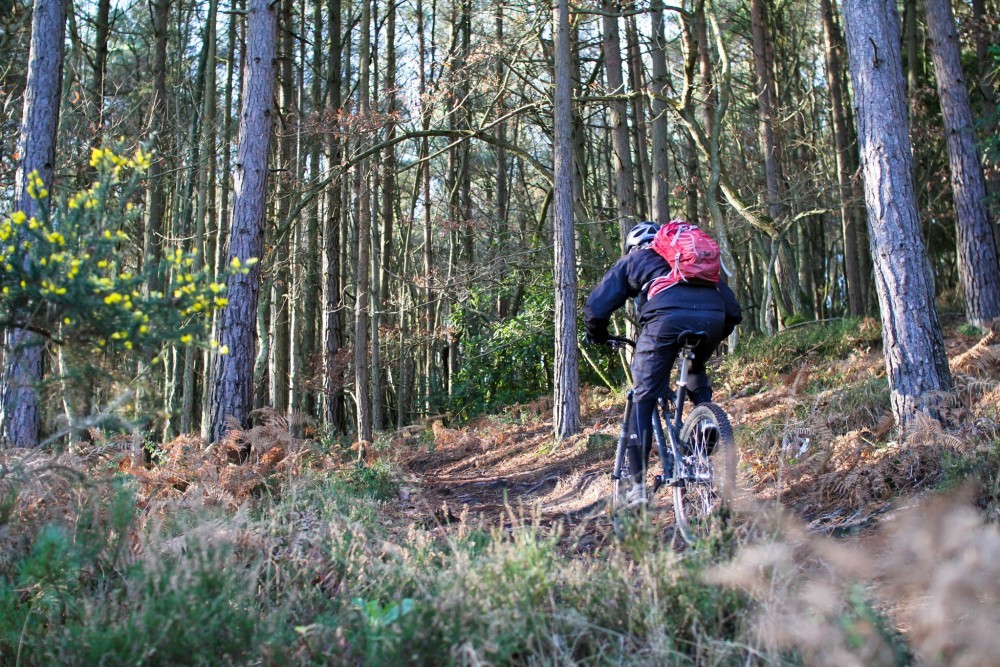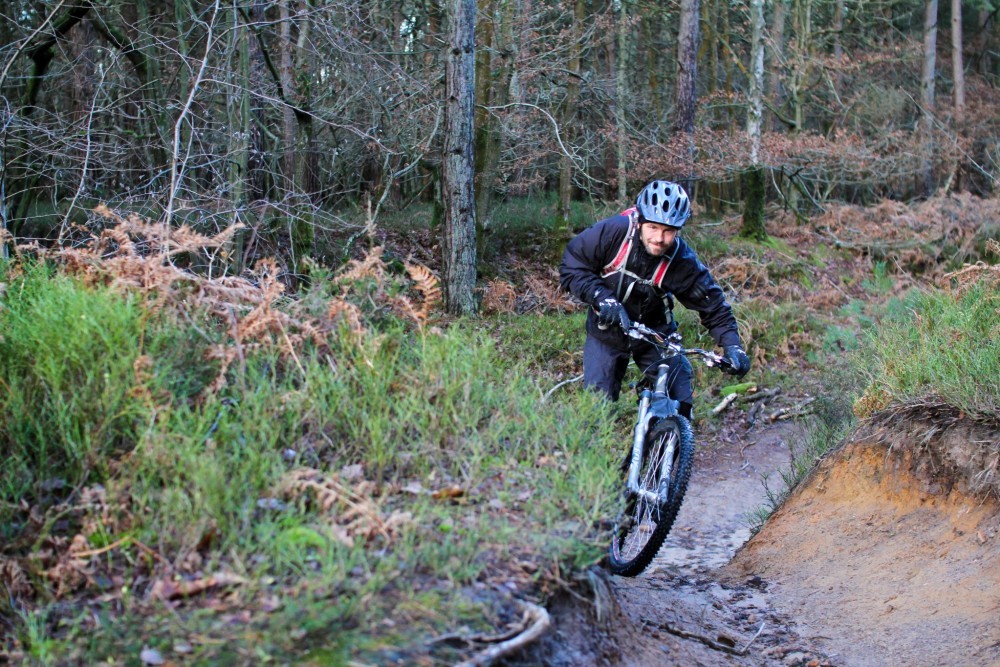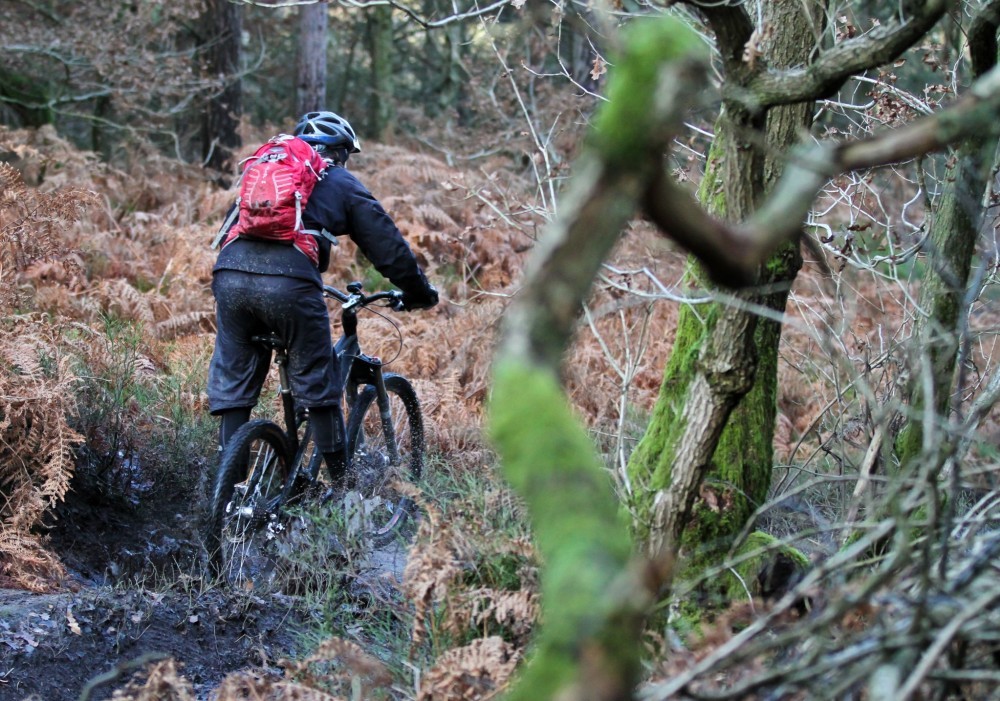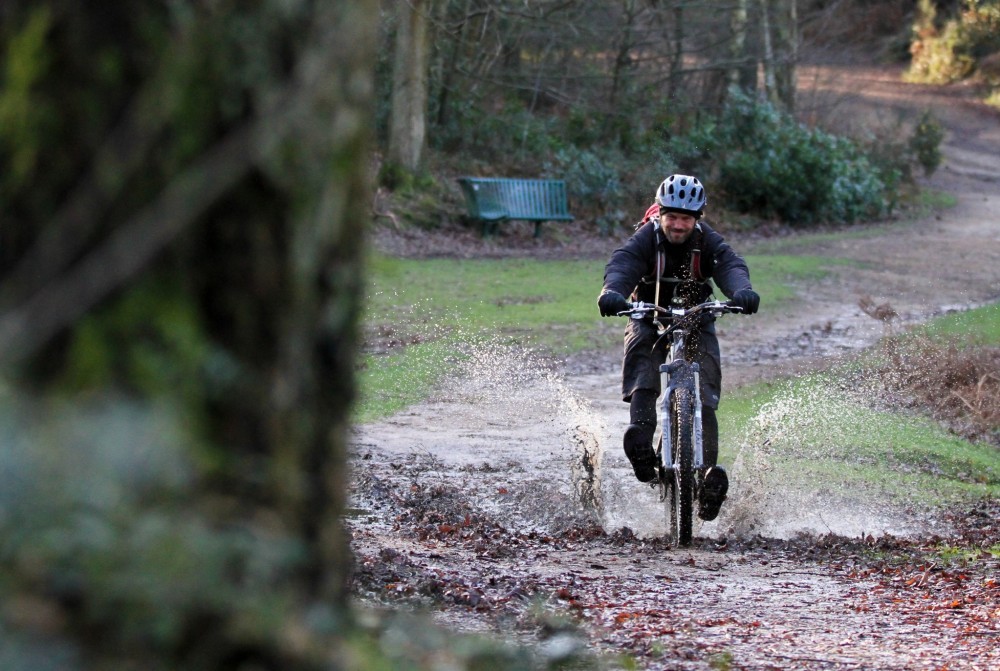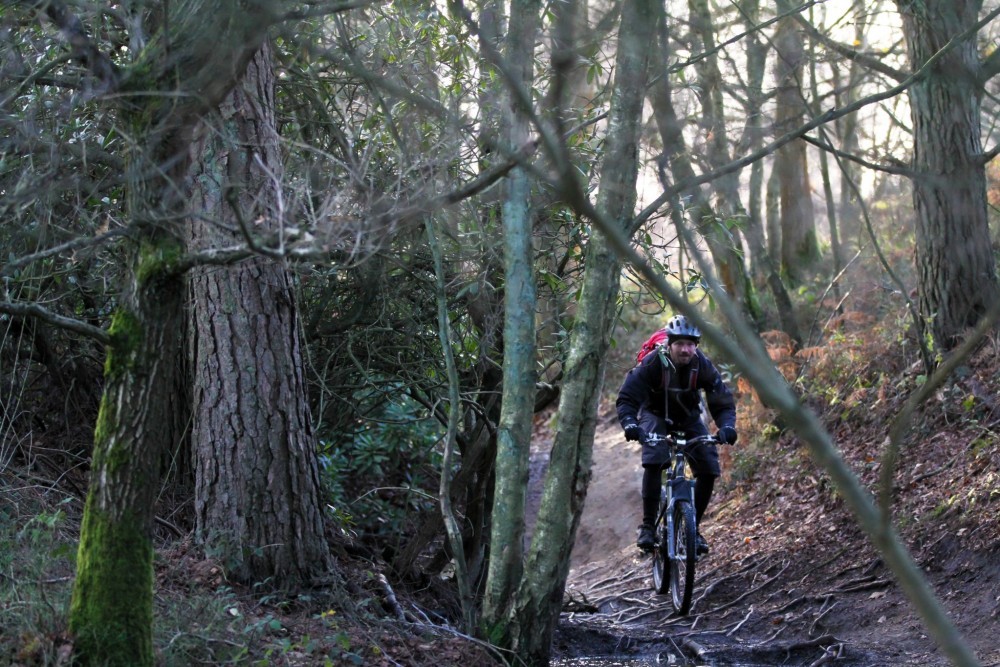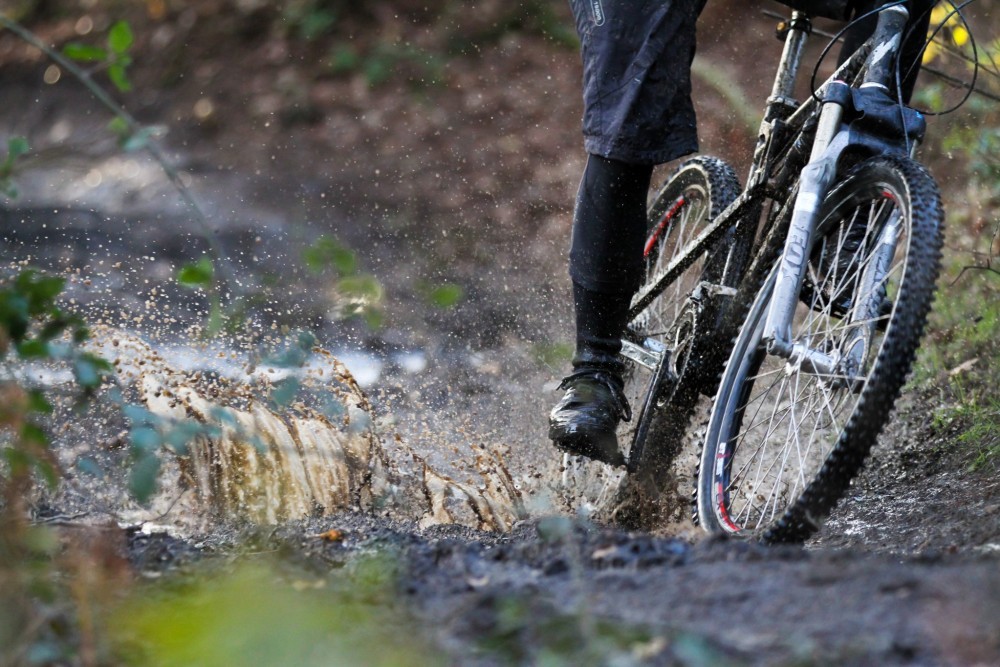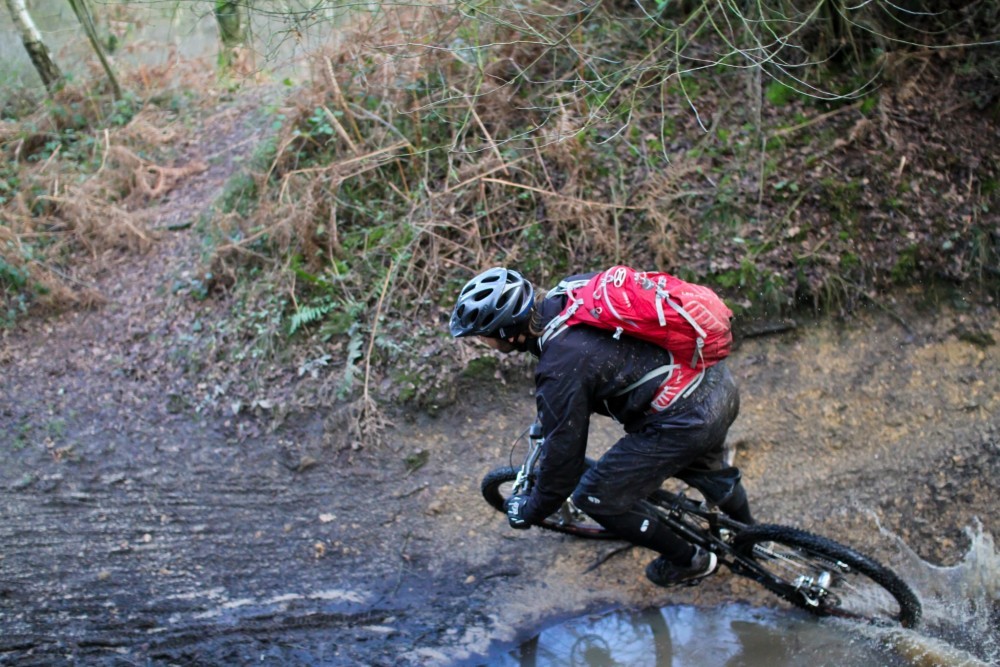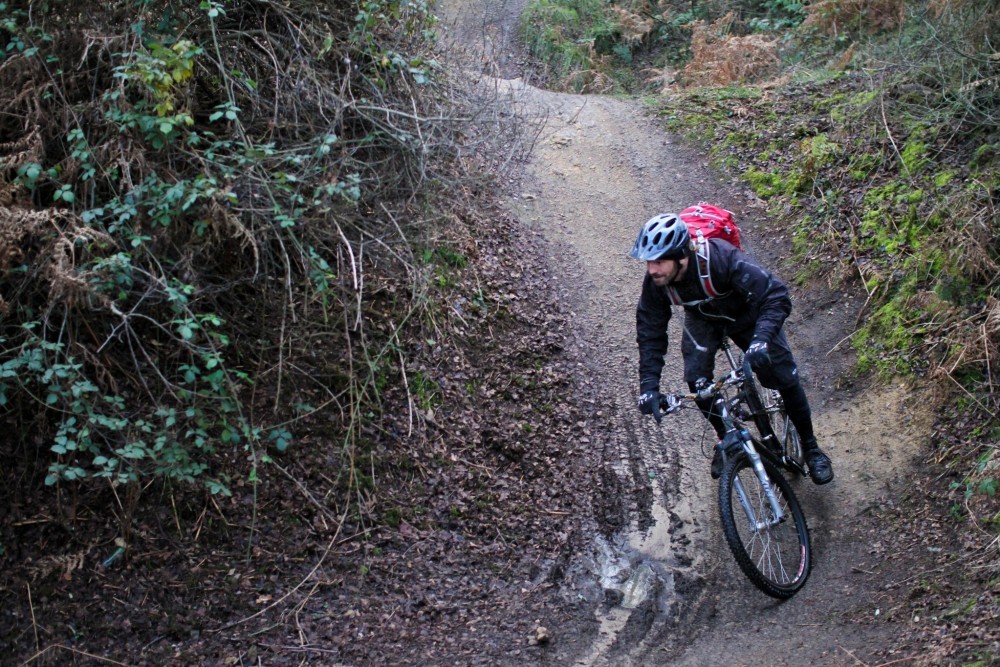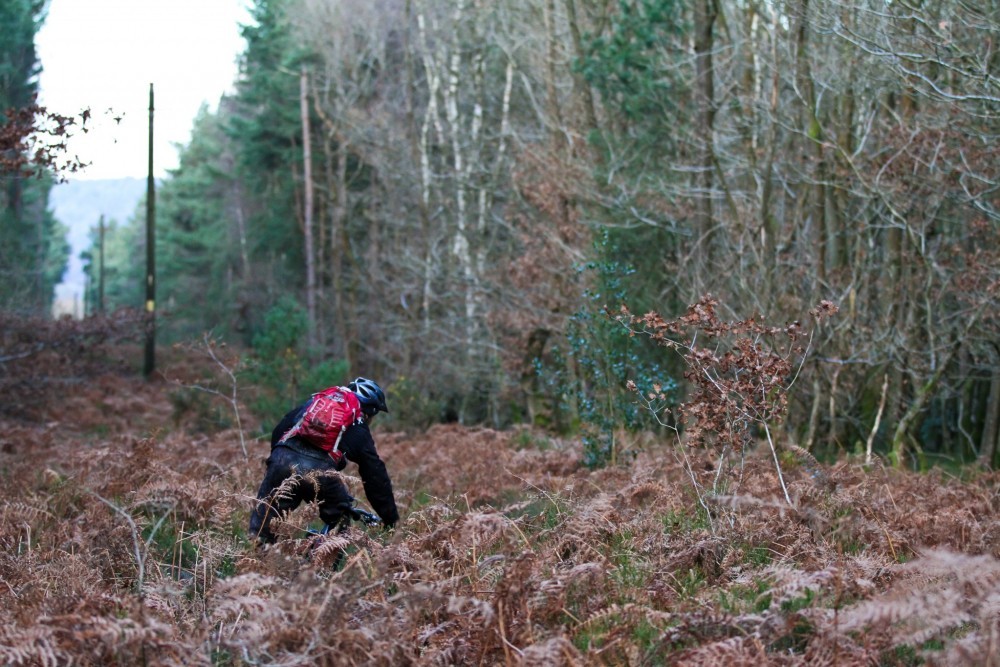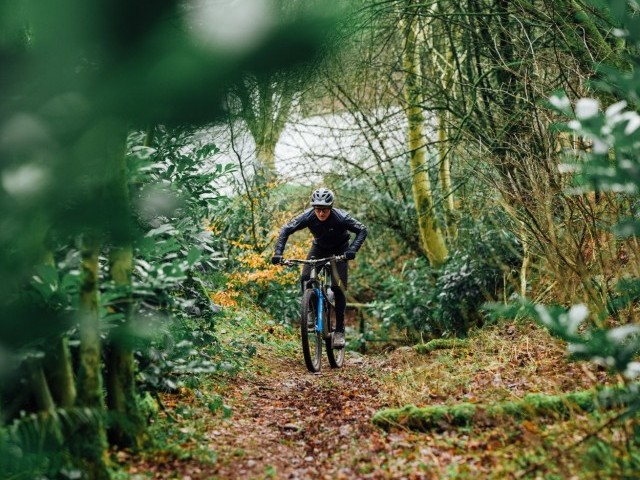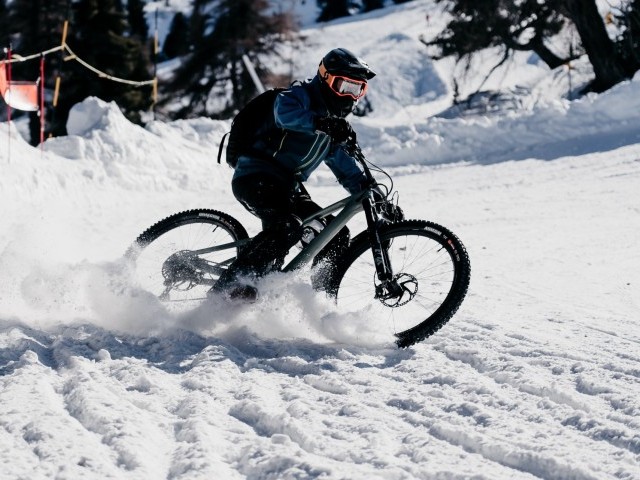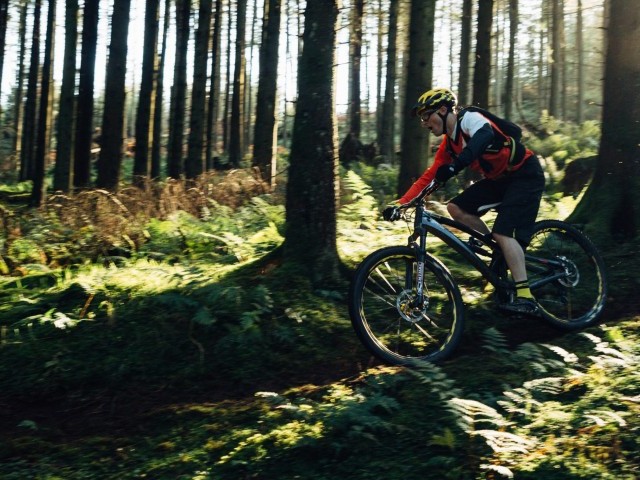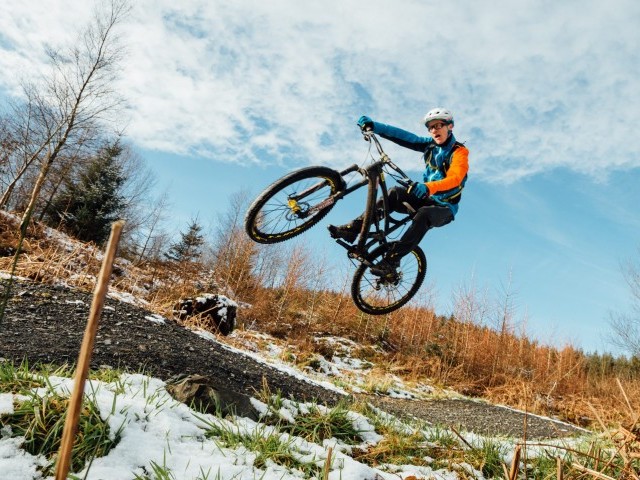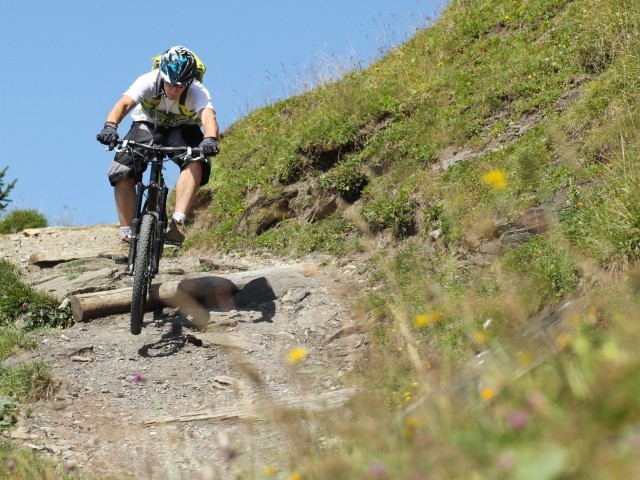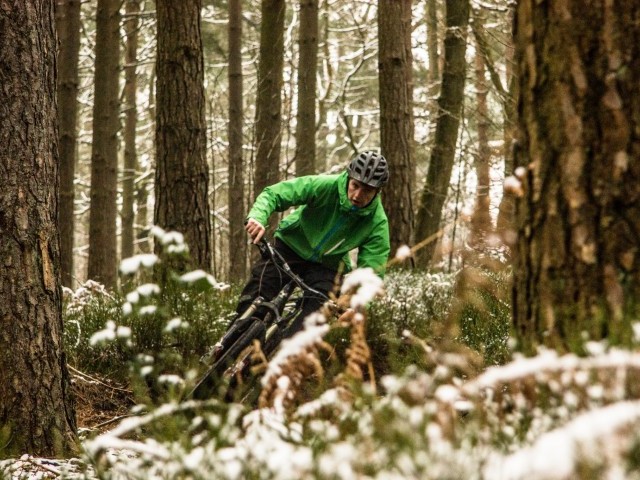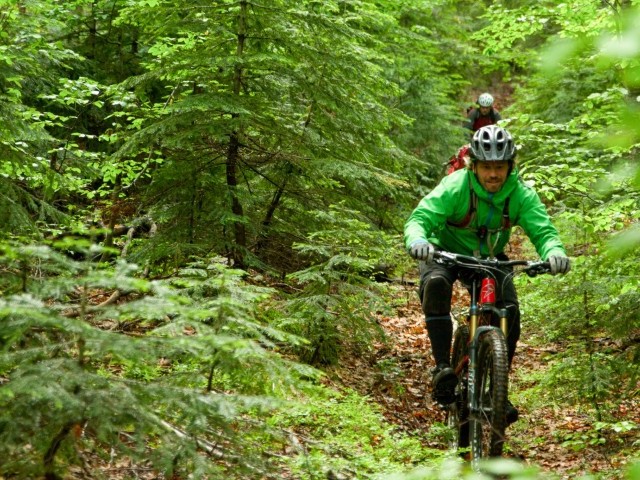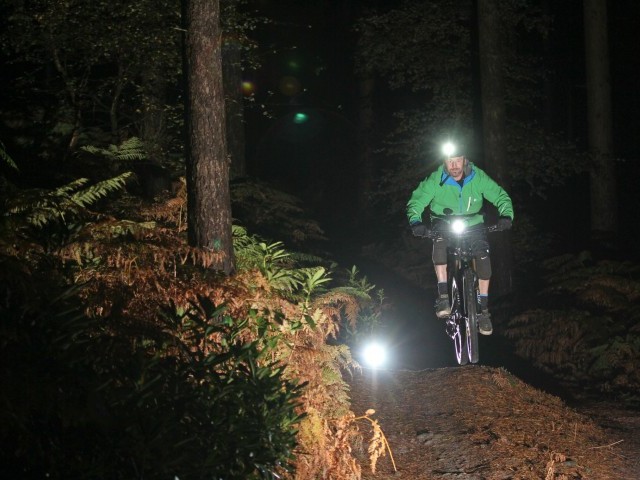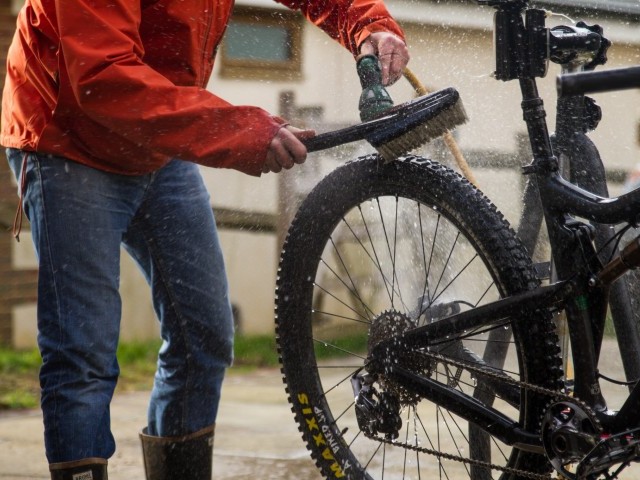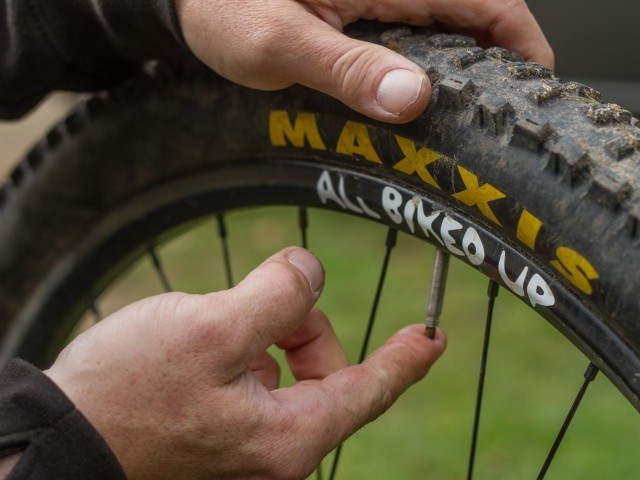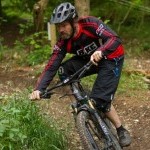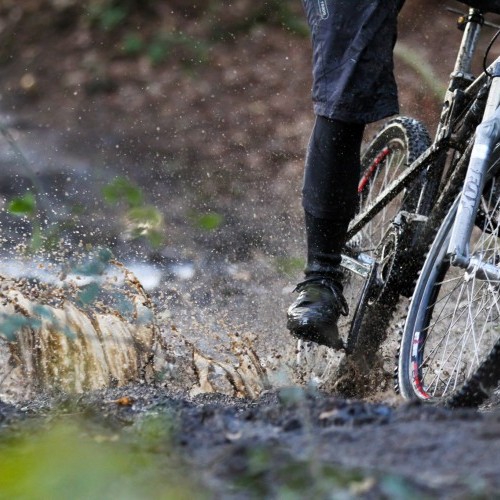
Winter Riding
Technique / Seasonal Riding
Introduction
Ask any rider about their favourite mountain biking memory of that year and very few will recall a ride though sloppy conditions in driving rain with a cold wind biting, quads burning, crotch sodden and trails livelier than a bucket full of eels.
Despite this the vast majority of us have experienced a ride like that and still we go back for more.
Though these conditions may test your resolve, stamina and ability, rides like these can provide some great riding memories and go to make up the rich tapestry of riding that keeps us craving another spin.
Variety is indeed the spice of life and although an endless summer might seem like an ideal trail scenario, would we not get just a teensy bit bored if conditions were always this way?
It has been written that ‘Winter is natures way of saying “Up yours” (Robert Byrne). As a mountain biker you have to believe that even if she was to say that, mother nature would have a cheeky grin on her face as she did so, more poking fun than being malicious.
If MTB is your passion you cannot just turn that passion off when the mercury and barometric pressure drop, but neither does your pursuit of this passion have to be a form of self flagellation and nor should winter riding feel like retribution for all the good times.
With the right preparation and equipped with the right skills, Winter riding can be every bit as rewarding, enjoyable and memorable as riding in more favourable weather/trail conditions. Added to this you’ll greet the spring and summer trails with more finely tuned skills and at least a semblance of fitness. Master your favourite trails in poor conditions and when they are back to their best you will be rewarded tenfold, riding faster, smoother and with an even wider grin!
You and Your Equipment
It is an often-espoused truism that states there is ‘no such thing as inappropriate weather, only inappropriate clothing’. With out doubt, how you prep up for winter rides has a direct effect on your success and enjoyment. It is not just your personal attire that you need to consider but how your ‘dress’ your bike too.
Breathable layers, good waterproofs, seasonal biking gear, bib shorts or tights are all obvious choices in terms of wardrobe, but also think beyond your ride when preparing and think of something warm and dry for after your ride. Winter riding might be one of life’s guilty pleasures but sitting in a sopping chamois during the non-bike leg of your journey home will never achieve a similar status.
When it comes to prepping yourself and your bike for winter there are a number of considerations.
First and often overlooked is where you do your prep. As much as preparing for a ride in car parks, tweaking set up, sorting out minor maintenance issues, or as it is commonly known ‘faffing’, is a bearable (if not integral) part of fair weather riding, dispensing with this aspect of your pre-ride ritual in winter is a good idea. Where possible arrive ready to roll. That does not mean there are not set up points to action, but the warmth of a workshop, shed, garage or if you are single (or soon to be), lounge, is a better place to address this than in a car park or at the trailhead.
In wet and sloppy conditions we need to think traction and purchase. Both your contact with the bike and its contact to the trail will be challenged. Starting with 'you', numb fingers and feet will not help when riding conditions where your ‘soft’ skills are tested. You need to be quick to respond to tyres drifting and able to feel when traction is on the wane, not wait until it is lost altogether. You’ll be more sensitive to this if you can actually feel your hands and feet. Good gloves will provide warmth and grip even if they do not keep all of the water out. If you can’t find the holy grail of a truly waterproof shoe something that keeps the majority of the water at bay is a must. Over boots and or waterproof socks can add to your armoury in the battle against the elements.
There is always going to be a trade off between staying dry and looking a bit of a goon, but it really is worth erring toward the side of 'goonery' when the conditions are bad. Anyone you meet on the trails not cold, wet and miserable will no doubt be similarly attired. In the colder months looking ‘cool’ and being cold go pretty much hand in hand. If your body is struggling to stay warm it can be energy sapping. Conditions will have you working harder anyway and any energy loss will be amplified. With this in mind even if you are well attired, pack a little extra in the way of energy boosting snacks.
Mud flying freely, you may want to consider eyewear to keep out the worst, if not all, of it. Squinting is an option but is more than a little unreliable and will no doubt restrict one of your key senses. If you are on a budget, don’t fancy shelling out and don’t mind compromising performance and comfort to a degree, some safety specs from a hardware store are a cheap option.
It is one thing that you are ready for the elements, but neglecting to prep your bike for the conditions can easily undermine performance and enjoyment too.
Again think contact points. Well-worn grips might give adequate purchase to the bars when dry but get them wet and they can become a liability. If you don't feel that you have a good bond with your bike you will definitely end up hanging on tighter. This tightness can spread through you, your body becoming more tense and thus moving less freely as the bike tracks the bumps. Shock waves resounding up through your arms and shaking you around is less than desirable. Staying loose is important when it comes to managing the inputs generated by the terrain and in minimizing the bikes likelihood of being squirted out from beneath you like a bar of soap.
Pedals are your primary point of contact with the bike so slipping off them in the wet (or dry) is never good. Mud and water will potentially have a negative effect on the purchase that you seek. If you are riding flats pedals remember that the flatter and softer the sole of our shoe the better the contact will be. Too rigid a sole or defined an arch in the shoe and you will compromise that contact. The problem here is that a flatter softer sole does not often accompany a high level of waterproofing, once again we find a trade off. A quality flat pedal will allow you perhaps to enjoy the benefit of a stiffer stronger boot whilst not loosing too much in terms of purchase. A good broad platform with fairly aggressive pins is the order of the day. If you are looking to save money, look elsewhere and don’t compromise on your pedals. If you prefer to ride clipped in, slop and mud can affect the performance of moving parts so keep them well maintained. It is more likely when conditions are wet that you might have the sudden need to dab a foot - not always easy when clipped in. Whilst developing your winter skills you may consider flats as an option - but ultimately they should not be adopted as a 'talent compensator'. Regardless of whether you ride flats or clips heel drop will add to your connection with the bike.
As well as you staying in good contact with the bike you need to consider your bikes ability to stay in contact with the trail. There are a good range of winter tyre choices out there. Wider tread patterns and bigger knobbles will shed mud better and cut deeper into loose trails. If you are riding in chalk and clay you will want a narrower gauge tyre to cut more cleanly through the top film into something that offers a bit more traction. Generally speaking, the smaller volume of tyre you run the higher the pressure you need to run to avoid pinch flats - what is good for cutting through mud in terms of tyre choice and pressure may not be best for dealing with wet roots slippery rocks, etc. A larger volume winter tyre may create more drag in the claggy stuff but when its super sloppy, wooded or rocky a wider profile tyre, run at a lower pressure might outweigh this negative. As well as softening tyres you may consider softening suspension and slowing rebound so that wheels track the ground more continuously and don't’ get bounced off the trail surface.
Accompanying adjustments to your bike, there might also be additions. Here we are talking about those 'add ons' that are designed to catch some of the mud as it flies up off the wheels and trail. You may consider mudguards but to be honest you are gonna get muddy so let your clothing deal with that. A down tube mounted “crud catcher” is a worthwhile consideration as is a guard mounted between the crown of the fork and the arch of the lowers. You can buy the latter or fashion one out of a used inner tube and a few cable ties. Most important is to reduce the amount of mud thrown towards your face, which can end up in your eyes.
Another pre-ride consideration is your brakes. If your pads are close to the end of their life, remember, winter riding conditions eat bikes generally and brake pads particularly. Fitting a new set mid-ride is an easy enough task in good weather but with cold fingers the wind and rain any mechanical activity needs to be kept to a minimum. If they are looking low swap them out before you ride. Don’t bin the pads you have removed if they have some life in them, keep them as emergency spares. Try also to bed in new pads as well as possible before you hit the mushy stuff.
With bike and rider ready to roll, prepared and protected from the elements you should be able to arrive at your start point and get straight on it. If you are planning to ride hard from the off don’t forget the benefits of stretching out a bit before you start, cold muscles forced into action without any warm-up can refuse to perform. If you don’t have the time or inclination to do this then remember that your body is gonna take a little longer to be at peak performance than on warmer days and take it a bit easy until the blood is pumping to all the muscles.
When it comes to the 'on bike' techniques the margin for error is of course narrowed when the ground is more likely to move below you and traction is lost. In these conditions it is all the more important to apply best practice to your riding. If you are not employing these techniques in the dry you are to a degree getting away with poor performance. Poor conditions will highlight and emphasise poor techniques much more than when the trails are hard packed and dry. Maintaining traction whether on the way up, when descending, cornering, crossing cambered trail and roots or controlling speed, is one of the biggest issues when it is wet and wild.
Traction Control
Traction when climbing can easily be lost. Stamp on your pedals and you will find wheel spin a common occurrence. Even if it does not stop you in your tracks, wheel spin created though poor pedalling technique will sap your energy. To counter this, try and create a constant and even torque through your drive train. Your feet move in circles of over a meter. Try and create even power for as much of the pedal stroke as you can. Too much torque delivered too suddenly and traction will be lost. Definitely selecting a lower gear than usual will help avoid losing traction. You don't have to go too low in gears though. Sat in the granny ring, feet spinning like the roadrunner but hardly moving, can make maintaining balance pretty tough. As skills develop you will be able to up the torque and engage a slightly higher gear but you will need to develop a good sense of feeling. Knowing when you need to ease off the cranks to maintain grip and when you can apply more power is crucial. With time you will develop a better feel for waning traction and adapt the pressure you apply on the pedals to deal with this. As well as being more efficient and utilising a wider range of muscles, pedalling smoothly and evenly will definitely give you the upper hand in the battle for grip.
Staying seated and keeping as much weight on the rear wheel that is providing the drive is important but equally important is knowing when to lighten up a little to let the back wheel up and over roots or rocks, easing off the pedals a little until the tyre has crossed them. As a wheel rolls up over a root it is likely to briefly have a smaller contact point with the ground. If you hit the gas at the wrong moment all traction will be lost. Patience is a virtue when riding uphill in the wet, blasting out climbs standing up and pumping your quads is not a viable option and you will waste a lot of energy. Keeping traction will contribute dramatically to your efficiency. The more efficiently you ride the more you will have in your pocket for when the going gets faster.
Anyone that has ridden in very poor conditions will agree with the 17th Century Poet, George Herbert, who correctly asserted that, ‘in winter every mile is two.’ I cannot be sure if he was stamping his pedals or running semi-slick tyres but what I do know is that he was not far from the truth. Making things even harder by losing traction with every pedal turn is going to make every mile seem not just like two, but five. So feel for the grip, apply some patience and don't force the issue too much. If you have the range of gears at your disposal use them.
Traction in corners is another obvious concern for some riders when it is wet. Losing traction when climbing has it’s pitfalls and may disrupt your flow but lose traction in the corners and you risk leaving the trail altogether.
We have looked at corners in quite some detail in previous issues. As with other trail scenarios great conditions can mask bad habits. Getting the outside foot down in corners and weighting it is crucial. Even if you are doing this, sloppy riding will see too much weight leaning with the bike into a corner. More than ever in winter conditions you need to make sure that you are keeping your weight over the centre line of the tyres as the bike leans over into a corner. If you have a tendency to lean with the bike you risk it slipping away from under you. Rather than leaning the bike by pushing it over with your hips, drop your outside pedal and lean the bike into the corner by pushing down and a little through on the inside bar. Drive the bike by twisting your hips and shoulders to the exit point of the corner (where your head is already looking) but keep as much of your mass pushing down into the tyres, above them rather than across them. Leaning the bike but staying over the line of the tyres won't guarantee that you wont drift but when the bike does you stay on it and drift with it rather than the bike washing out from below you. The final point to consider (again applying to the dry too), is getting your speed control done at the right time, any attempt to decelerate mid corner when traction is already hard to find is going to be problematic. Get your speed control sorted before the corner. Once in the corner, commit, apply best practice and keep doing it even if you feel a little slide. Doing less of the good stuff as things are going wrong will not make things better.
Descending when conditions are soft and roots and rocks are slippery also requires commitment and a soft feel. Getting tight on the bike is a recipe for disaster. Soft legs and supple arms responding to the trail surface are crucial. Speed control and your braking technique are going to be tested. Simply locking the back up and then flirting with the front brake is far from advisable. Balanced braking that is achieved through squeezing rather than snatching it is crucial if you are going to stay in control of your bike and your emotions. Compressions at the bottom of any steep section require a little more care than in the dry. Water often collects and mud thicker at the transition from steep to flat, thump your weight onto the front of the bike as you hit the compression and you will risk the front wheel being squirted out from under you. Control your mass with your legs don't just rely on your arms and your forks to do all the work. Over-rotate at your peril. There may be times when the bike starts to feel like it is taking its own line, as wheels drift. When this happens freezing up will not help. Keep looking to where you want the bike to be next and line you hips and torso with that point.
To maintain traction and control in all the above scenarios, good energy management skills are required. Learning to relax and stay fluid can take some time - the natural instinct, as with so many potentially threatening situations, is to tense up. As in any aspect of riding getting too tight on the bike has a negative impact. Keep the body fluid and responsive to what is happening below. You will need to depend on 'feeling' more than ‘thinking’ when in the section and your responses need to be automatic and unconscious to a larger degree as your mind should be busy dealing with what is ‘next’ not what is ‘now’.
Set up for success and with the right application of skills winter conditions can be some of the most fun to ride. Trails that you can pin in the summer change character and some trails only truly come to life in the winter.
Learn to embrace the variety mother nature throws at you. Sharpen your responses and develop better feeling. Who knows, you may have the same epiphany as Albert Camus the French Philosopher who, clearly so moved by riding his MTB year round, wrote
‘in the depth of winter I finally learned within me lay an invincible summer’
Here’s hoping riding this winter helps you find your own ‘invincible summer’ within. Happy riding and Peace out.
This technique article was in Issue 15 of IMB.
Related
By Richard Kelly
Richard Kelly has been riding bikes since forever, and teaching people to become better mountain bikers for over a decade. He’s always out in the Surrey Hills training riders, building trails and riding for himself whenever he gets the chance. His unique perspective on mountain bike technique has earned him fans the world over, with some speculating he is actually Jamiroquai or perhaps Jack Sparrow…



